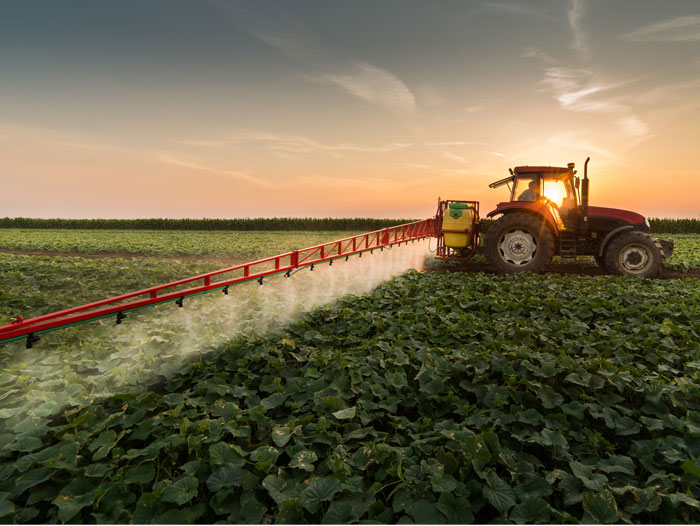Agreement Reached to End Sale of Chlorpyrifos in California by February 2020
October 10, 2019 | 6 min to read

SACRAMENTO – The California Environmental Protection Agency announced today that virtually all use of the pesticide chlorpyrifos in California will end next year following an agreement between the Department of Pesticide Regulation (DPR) and pesticide manufacturers to withdraw their products.
“For years, environmental justice advocates have fought to get the harmful pesticide chlorpyrifos out of our communities,” said Governor Gavin Newsom. “Thanks to their tenacity and the work of countless others, this will now occur faster than originally envisioned. This is a big win for children, workers and public health in California.”
“The swift end to the sale of chlorpyrifos protects vulnerable communities by taking a harmful pesticide off the market,” said California Secretary for Environmental Protection Jared Blumenfeld. “This agreement avoids a protracted legal process while providing a clear timeline for California farmers as we look toward developing alternative pest management practices.”
Earlier this year, DPR announced it was acting to ban use of chlorpyrifos by canceling the pesticide’s product registrations. The decision follows mounting evidence that chlorpyrifos is associated with serious health effects in children and other sensitive populations at lower levels of exposure than previously understood, including impaired brain and neurological development.
At the same time, DPR and the California Department of Food and Agriculture (CDFA) have established a cross-sector working group to identify, evaluate and recommend safer, more sustainable pest management alternatives to chlorpyrifos. It will hold its first meeting this month and will hold three public workshops beginning in January.
The agreement with Dow AgroSciences and other companies means that use of chlorpyrifos will end sooner than anticipated had the companies pursued administrative hearings and potential appeals process, which could have taken up to two years. Under the settlement, the companies agreed that:
- All sales of chlorpyrifos products to growers in California will end on Feb. 6, 2020.
- Growers will no longer be allowed to possess or use chlorpyrifos products in California after Dec. 31, 2020.
- Until then, all uses must comply with existing restrictions, including a ban on aerial spraying, quarter-mile buffer zones and limiting use to crop-pest combinations that lack alternatives. DPR will support aggressive enforcement of these restrictions.
To ensure consistency for growers and for enforcement purposes, DPR is applying the terms and deadlines in the settlements to seven other companies that are not part of the settlement agreement but are subject to DPR’s cancellation orders.
A few products that apply chlorpyrifos in granular form, representing less than one percent of agricultural use of chlorpyrifos, will be allowed to remain on the market. These products are not associated with detrimental health effects. DPR will continue to monitor for any exposures associated with these products.
The development of safe, more sustainable alternatives to chlorpyrifos is being supported through the current state budget, which appropriates more than $5 million in grant funding for the purpose.
- DPR will award more than $2.1 million in grants to fund projects that identify, develop, and implement safer, practical, and sustainable pest management alternatives to chlorpyrifos.
- CDFA will award approximately $2 million in grants to expand outreach about innovative, biologically integrated farming systems that reduce chemical insecticide inputs. Crops that have used chlorpyrifos will be a priority.
- CFDA will also fund approximately $1.5 million in research to develop alternatives to chlorpyrifos that provide safer, more sustainable pest management solutions.
Quick facts:
- Chlorpyrifos is used to control pests on a variety of crops, including alfalfa, almonds, citrus, cotton, grapes and walnuts. It has declined in use over the past decade as California growers have shifted to safer alternatives.
- Use of the pesticide dropped more than 50 percent from two million pounds in 2005 to just over 900,000 pounds in 2017.
- In 2015, DPR designated chlorpyrifos as a “restricted material” that requires a permit from the county agricultural commissioner for its application. In addition, application of chlorpyrifos must be recommended by a licensed pest control advisor and supervised by a licensed certified applicator.
- Following DPR’s designation of chlorpyrifos as a toxic air contaminant in 2018, DPR recommended that county agricultural commissioners apply additional permit restrictions, including a ban on aerial spraying, quarter-mile buffer zones and limiting use to crop-pest combinations that lack alternatives.
